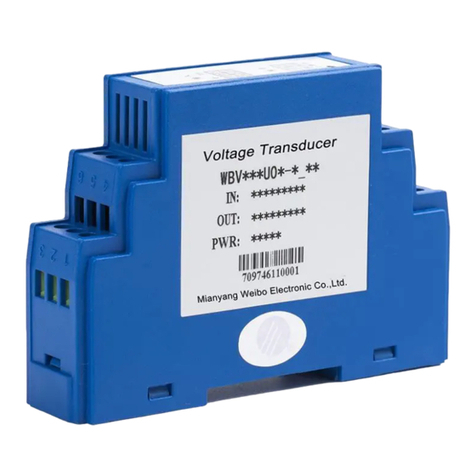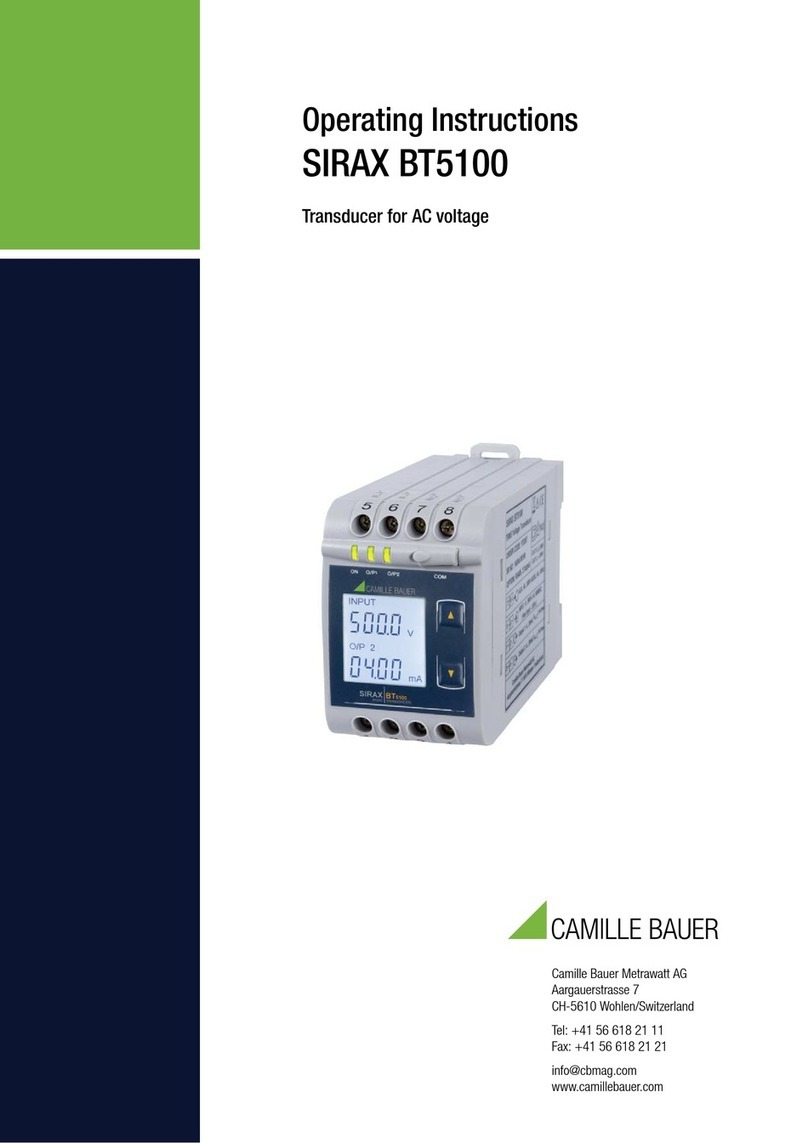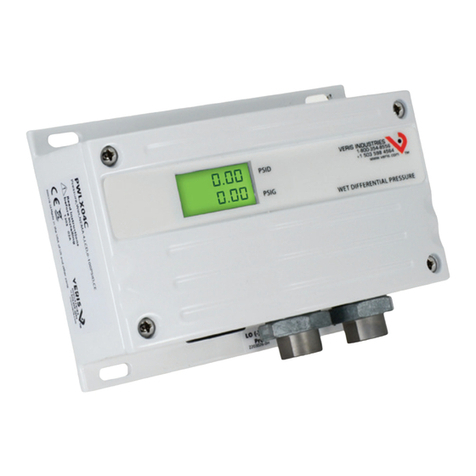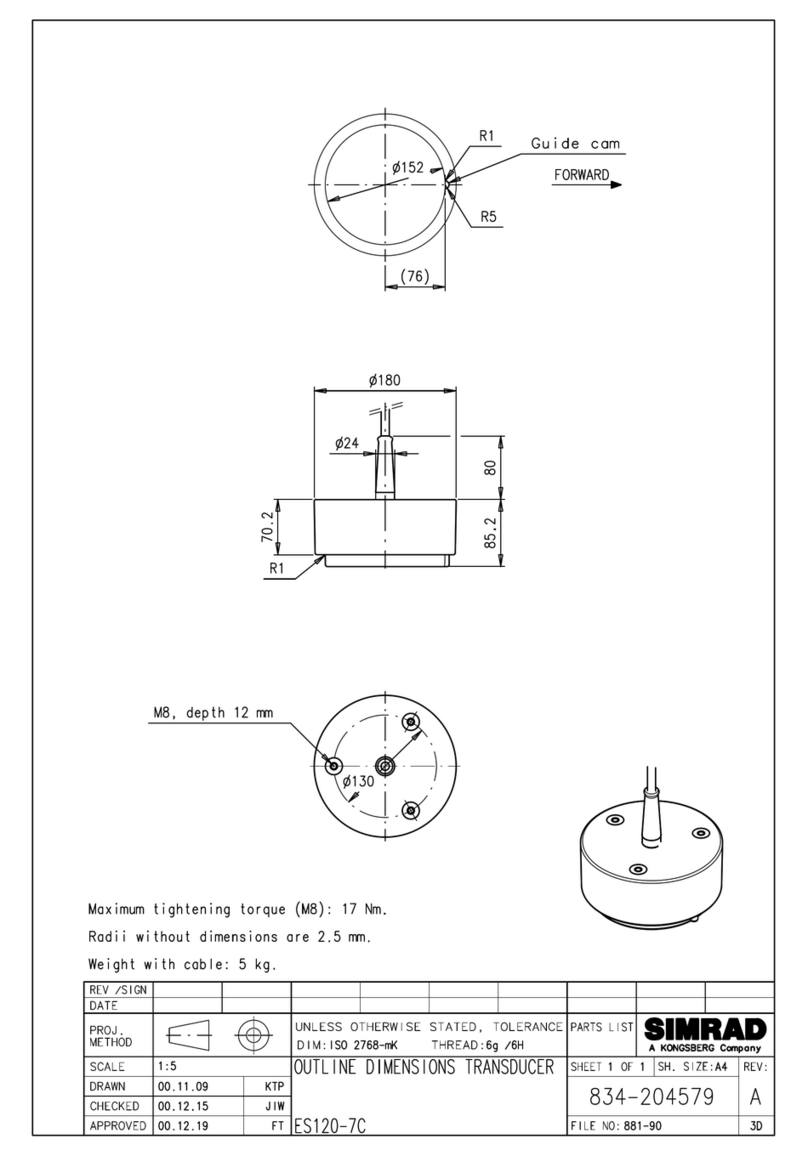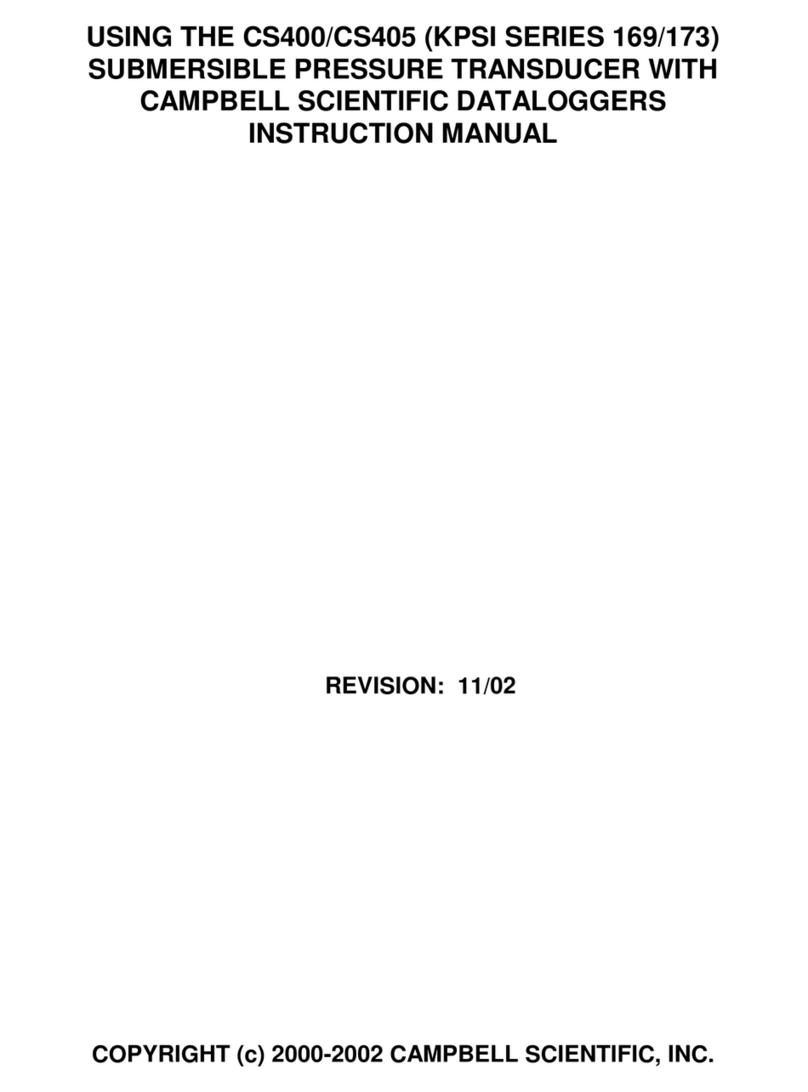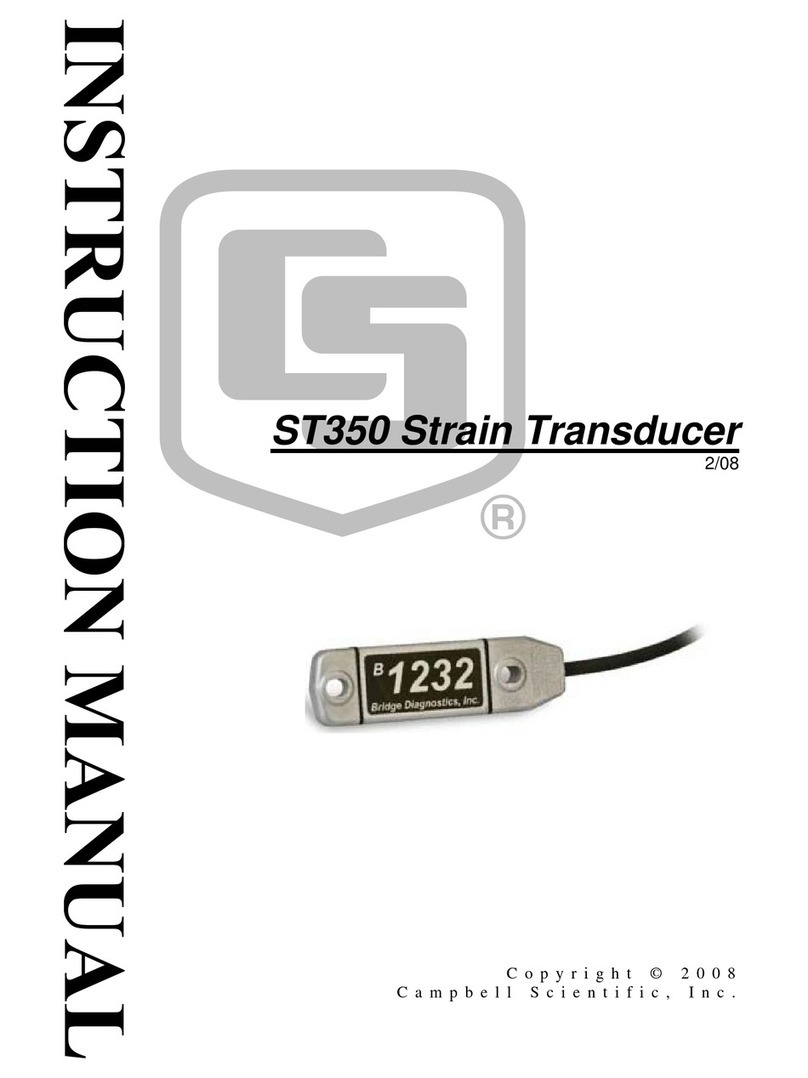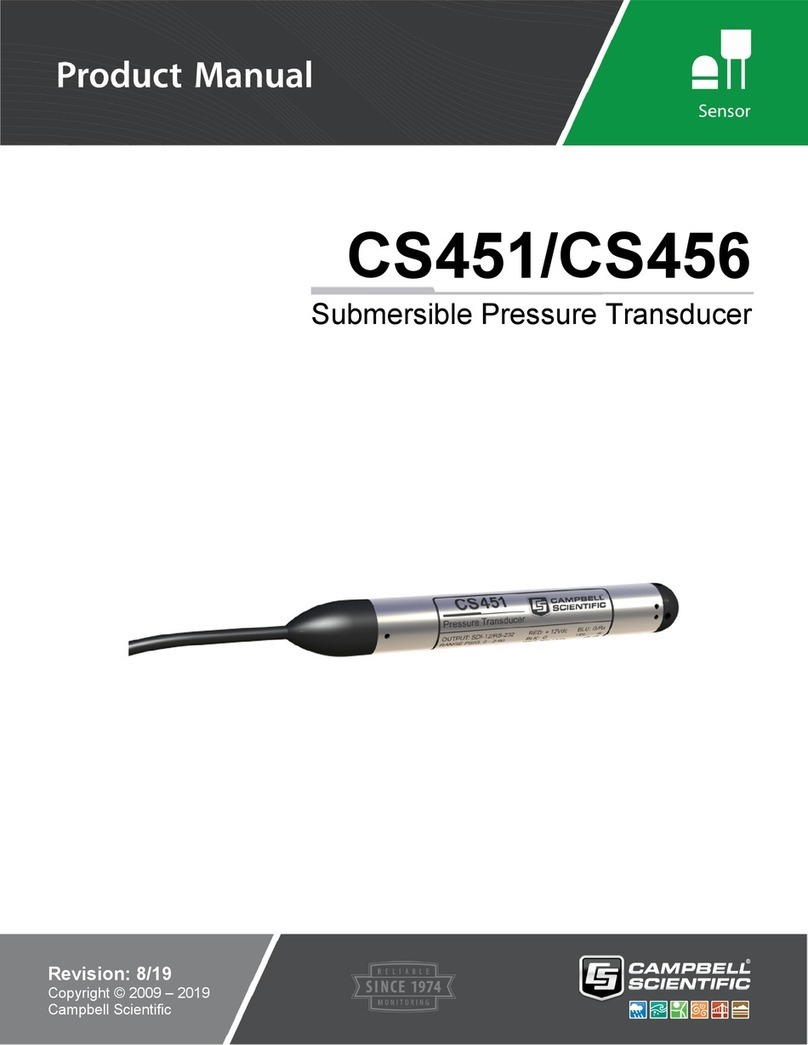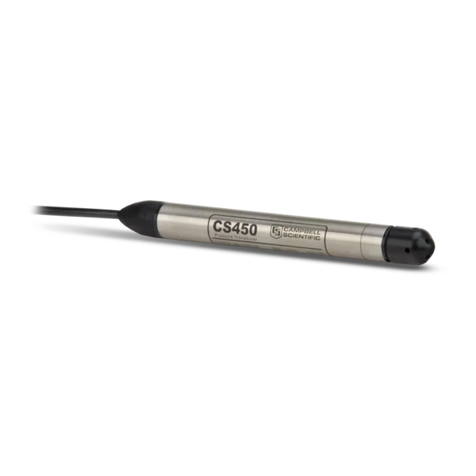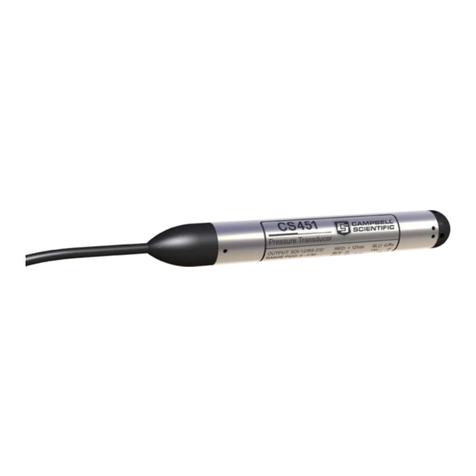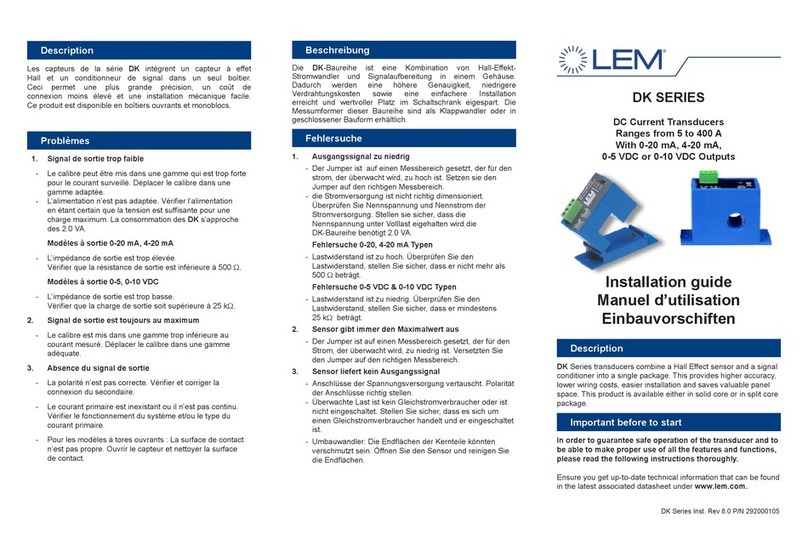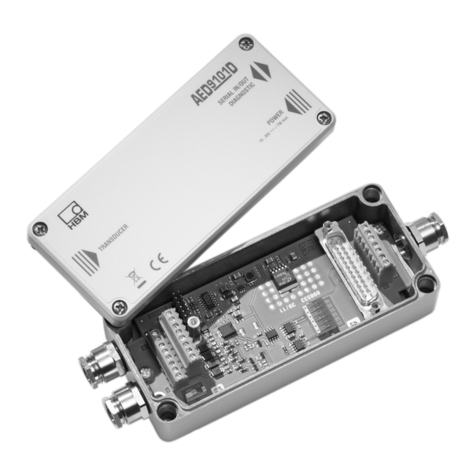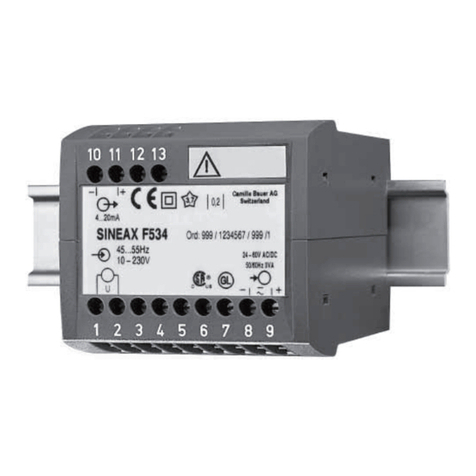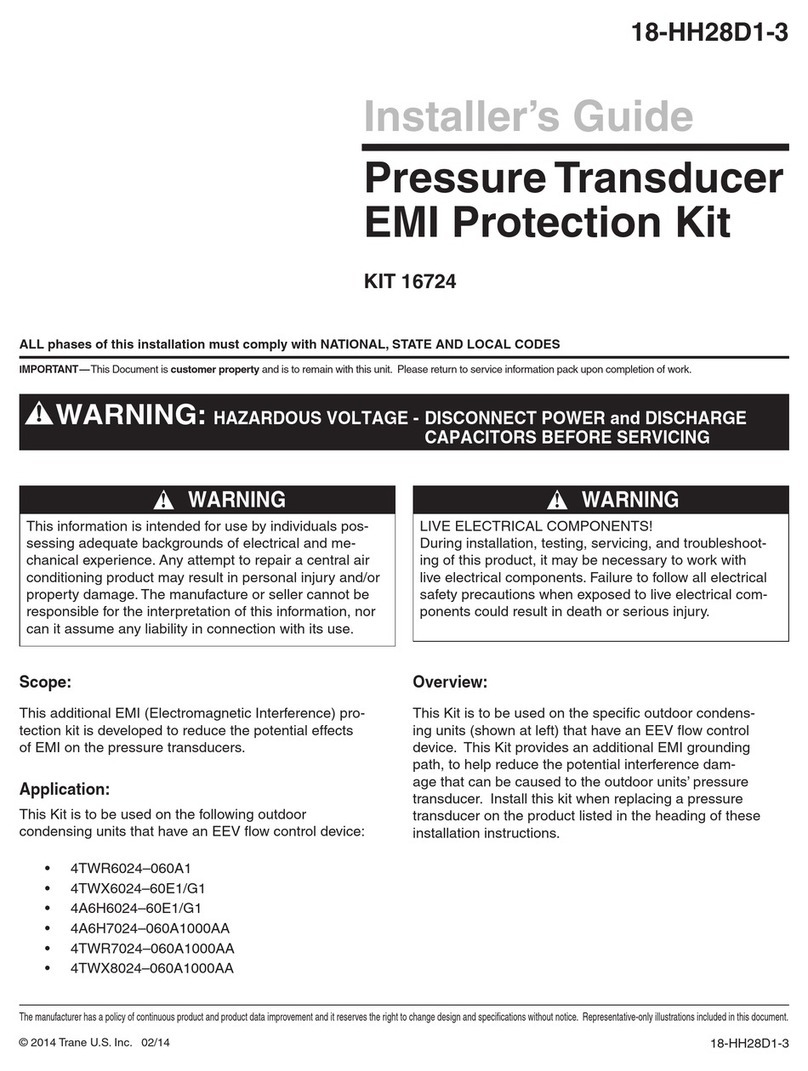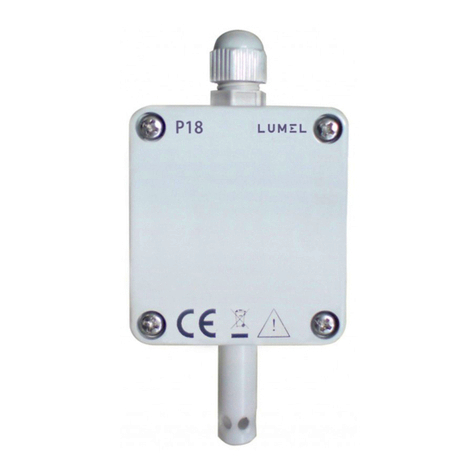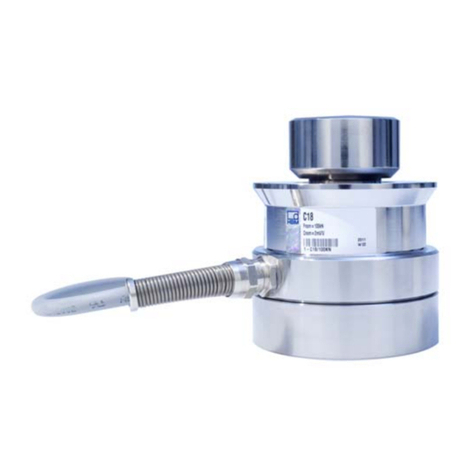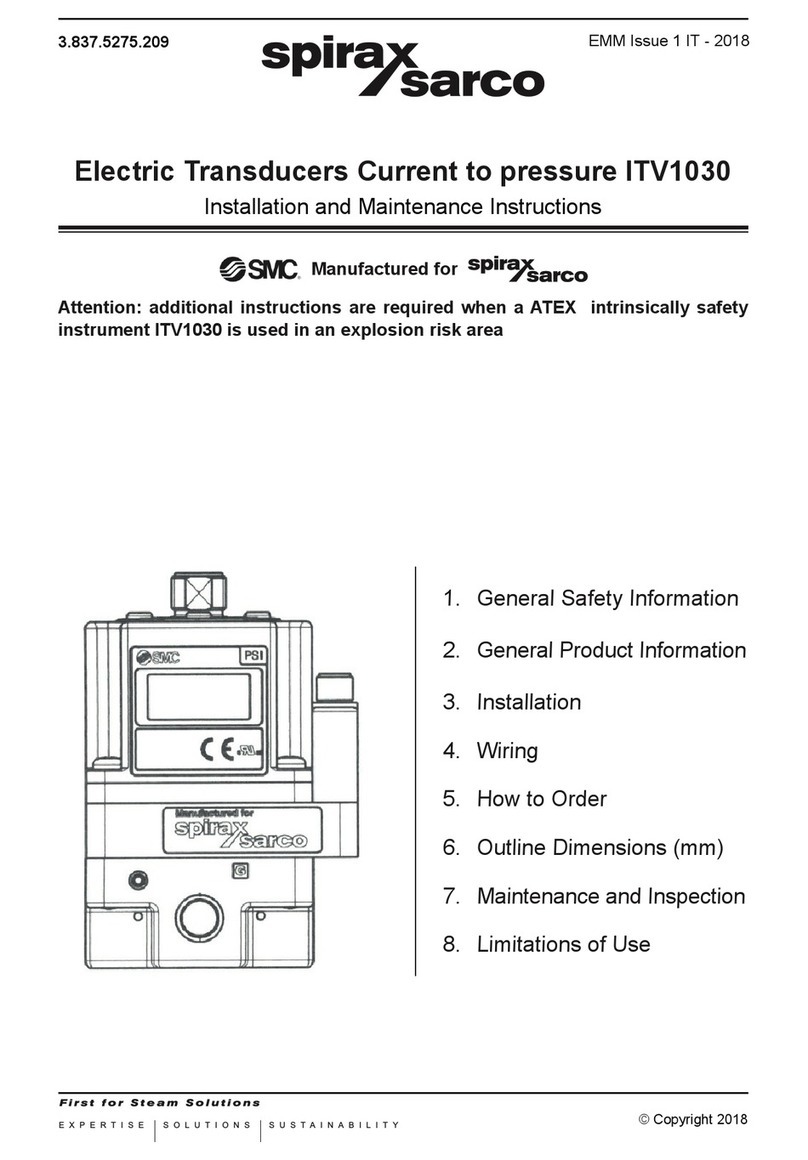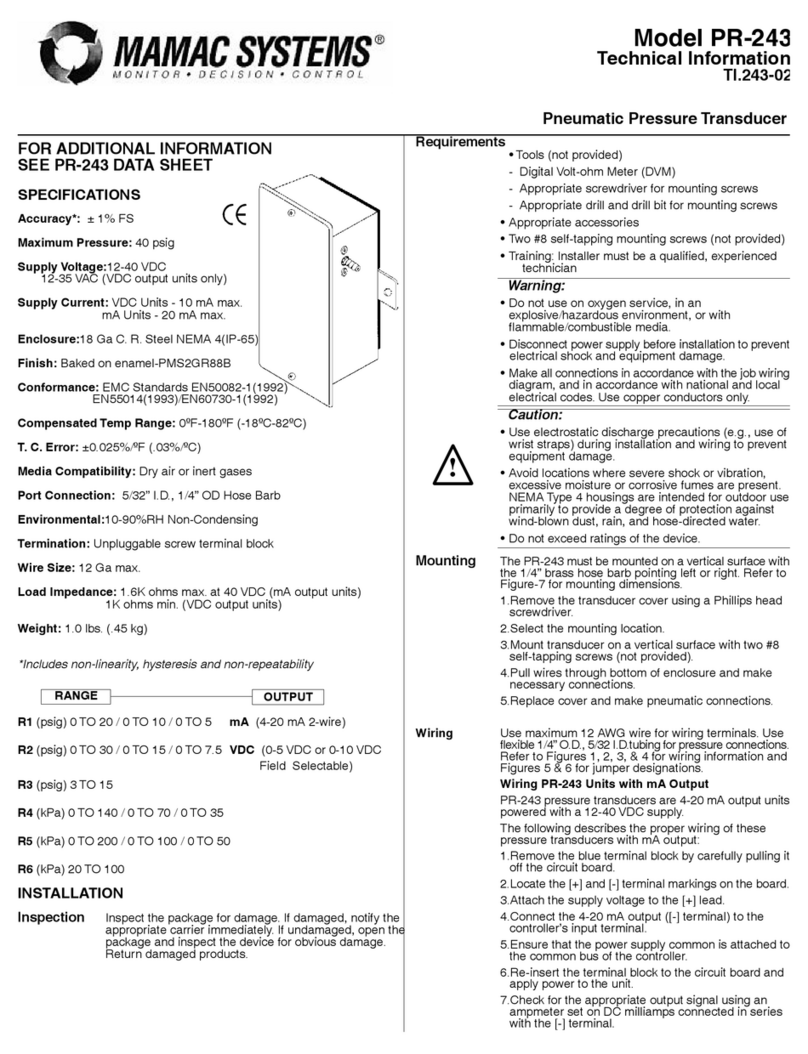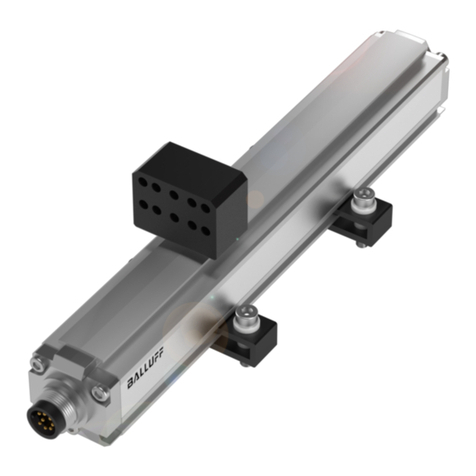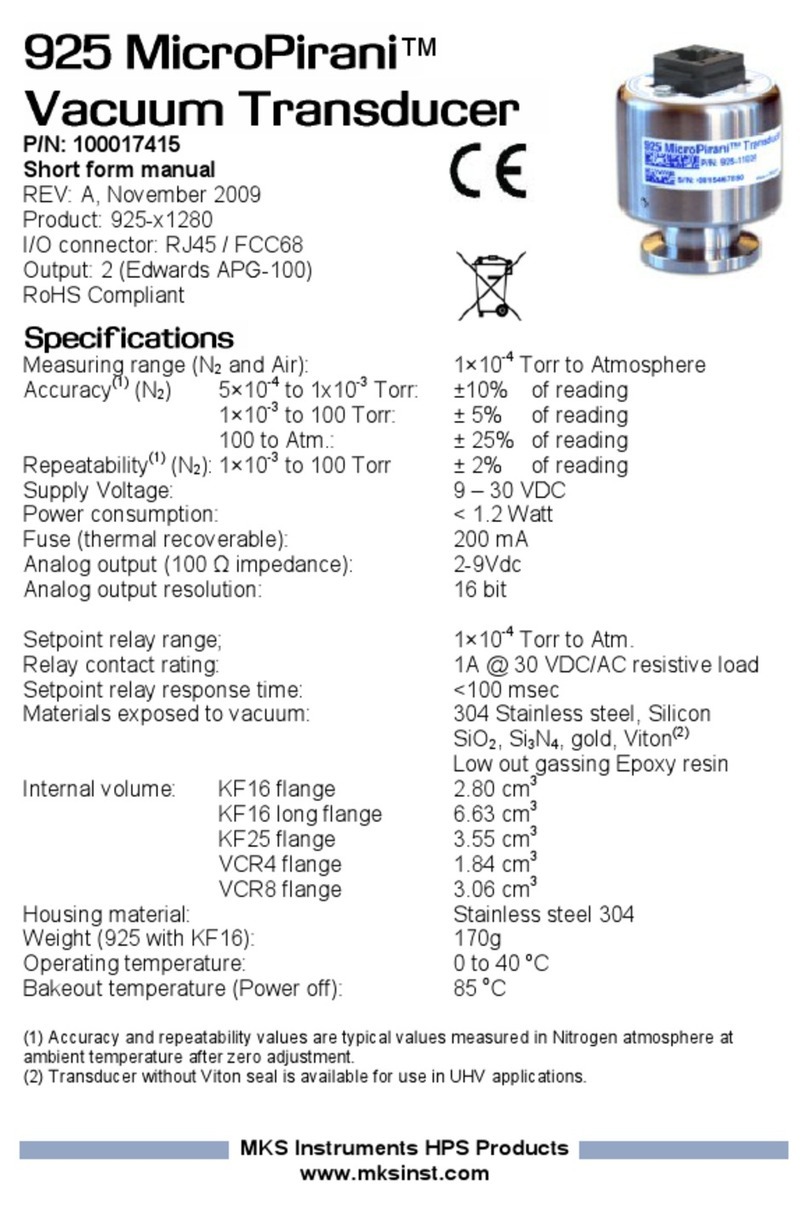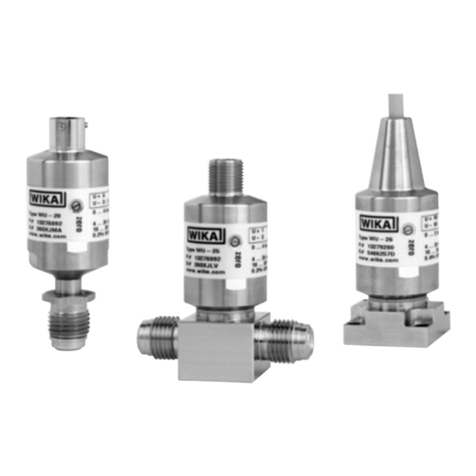
lRugged stainless steel or titanium case protects piezoresistive sensor
lFully temperature compensated
lLow power sleep state between measurements reduces power consumption
lWeighted nose cone offered adds 0.2 kg (7.4 oz) to the transducer weight. Additional
weight makes submersion of the transducer easier
lCompatible with Campbell Scientific CRBasic data loggers: CR6, CR3000, CR1000X, CR800
series, CR300 series, CR1000
6. Specifications
Power requirements: 5 to 18 VDC
Power consumption
Idle current: < 50 µA
Measurement/communication current: 8 mA for 1-s measurement
Maximum peak current: 40 mA
Measurement time: Less than 1.5 s
Outputs: SDI-12 (version 1.3) 1200 bps
RS-232 9600 bps, 8 data bits, no parity, 1 stop bit, no
flow control
Measurement ranges:
Pressure (psig) Pressure (kPa) Depth of fresh water
0 to 2.9 0 to 20 0 to 2 m (6.7 ft)
0 to 7.25 0 to 50 0 to 5.1 m (16.7 ft)
0 to 14.5 0 to 100 0 to 10.2 m (33.4 ft)
0 to 29 0 to 200 0 to 20.4 m (67 ft)
0 to 72.5 0 to 500 0 to 50.9 m (167 ft)
0 to 145 0 to 1000 0 to 102 m (334.5 ft)
Accuracy: ±0.1% full scale range TEB1or
±0.05% full scale range TEB2
Water-level resolution: 0.0035% full scale range
CS451/CS456 Submersible Water-Level Recording Sensor 7
